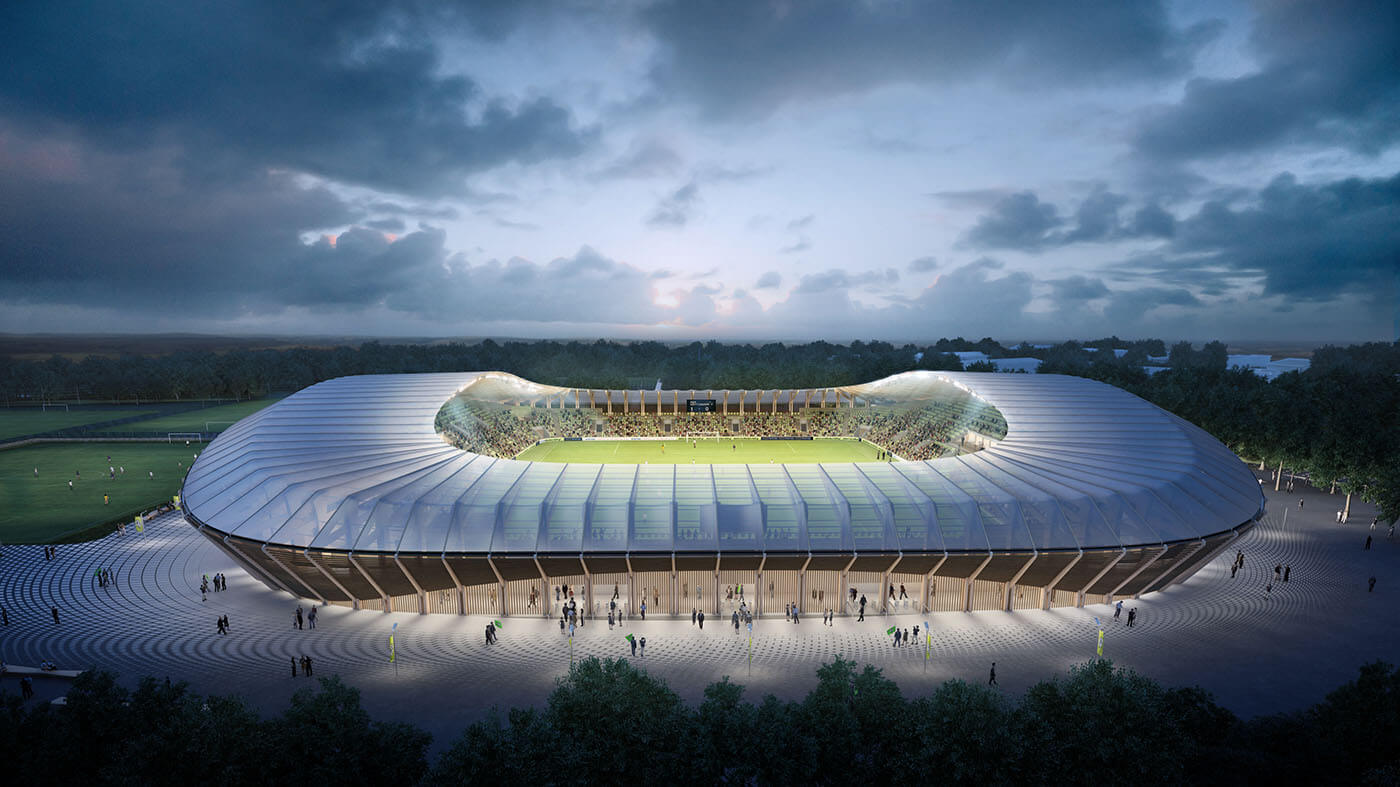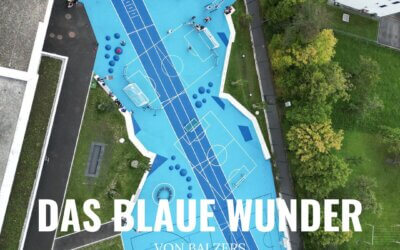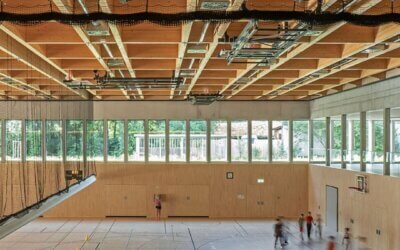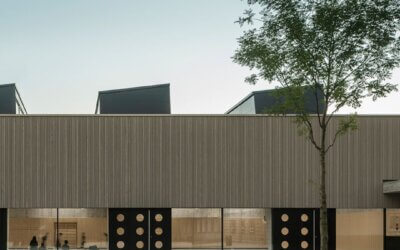Knock on wood
Forest Green Rovers Eco Stadium
Zaha Hadid Architects
Situation
The Green Rovers Eco Stadium was designed by Zaha Hadid Architects, and their interest in exploring new forms, materials and technologies is — proven.
However, at the moment there is not much that indicates that this ambitious project will become reality.
Vision
While the stadium will be the centrepiece, the project creates a new public realm with both recreational and occupational uses, enabling the entire site to contribute to the town — not only on match days, but every day of the year.
Design
As a building material, timber is highly durable, recyclable and beautiful. The proximity of the stadium’s structural elements to each other has also been determined to enable the seating terraces and floor slab to be made from timber. In most other stadiums, these elements are concrete or steel.
The stadium’s roof is covered with a transparent membrane, which contributes to turf growth, minimizes stark shadows for players and fans and reduces the volumetric impact of the stadium from distant views in the surrounding landscape.
Atmosphere
The stadium’s design incorporates the club’s future growth. Initially for 5,000 spectators, increasing to 10,000 with the club’s success, expansion from phase 1 to phase 2 can be achieved without the costs of major construction works.
Carbon
Dale Vince, Ecotricity founder and Forest Green Rovers chairman, said: “The really standout thing about this stadium is that it’s going to be almost entirely made of wood – the first time that will have been done anywhere in the world.
“The importance of wood is not only that it’s naturally occurring, it has very low embodied carbon – about as low as it gets for a building material.
“And when you bear in mind that around three quarters of the lifetime carbon impact of any stadium comes from its building materials, you can see why that’s so important – and it’s why our new stadium will have the lowest embodied carbon of any stadium in the world.
Eco Park
The other half will comprise a green technology business park with sustainably built commercial offices and light industrial units, giving Eco Park the potential to create up to 4,000 jobs, including room for the continued expansion of green energy company Ecotricity, who have submitted the overall proposal and who are already the biggest employer in Stroud with 700 people located across four sites.
The proposal will also see the development of a nature reserve on the site, a potential public transport hub, including a Stroud Park and Ride, as well as help with the restoration of the Stroudwater canal.
Local parish councils initially endorsed the entire project, but rejected it in the summer of 2019.
Whether and how things will continue is currently completely uncertain. A shame.
We did this.
Architect
Zaha Hadid, Patrik Schumacher, Jim Heverin, Sara Klomps, Karthikeyan, Arunachalam, Sara Akbari, Muriel Boselli, Avery Chen, Saman Dadgostar, Cynthia Du, Paulo Flores, Fabian Hecker, Jakub Klaska, Vincent Konaté, Igor Pantic, Edgar Payan, Sven Torres, Theodor Wender, Richard Wasenegger
Address
Forest Green Rovers Football Club
The New Lawn Stadium Another Way
Nailsworth GL6 0FG
Vereinigtes Königreich
Videos
Our Blog
The Blue Court
The Blue Court in Balzers The blue wonder Wegmüller Design StudioWhen you enter the Blue Square at the Balzers school building, you immediately sense that this is not about norms, but about possibilities. Around 1,000 m² of space invite you to exercise and socialise…
Lodererplatz sports hall
The good life. With Mensa.
Sports Hall Fasanenhof School
School and competitive sports with separate entrances.










